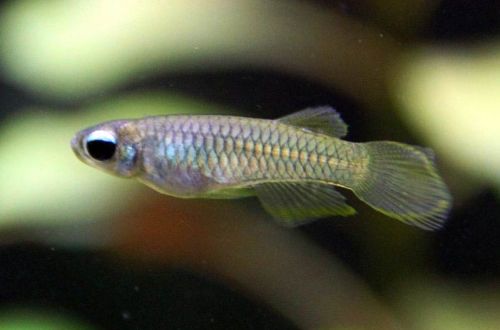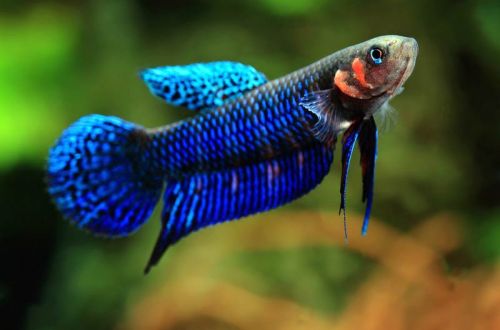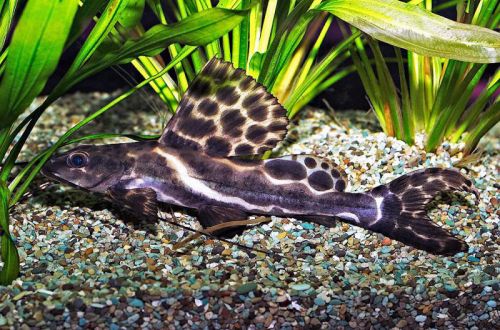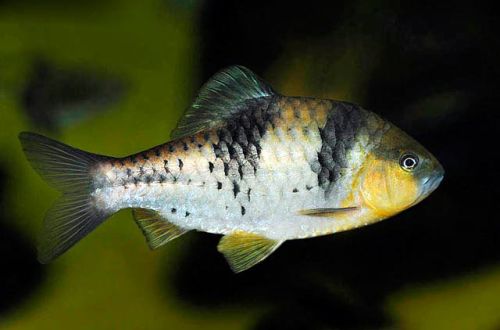
Blue-eyed Norman
Aploheilichthys Norman or Blue-eyed Norman, scientific name Poropanchax normani, belongs to the family Poeciliidae (Pecilian or Gambusian). Peaceful schooling fish, easy to keep and breed. They make a great addition to the freshwater aquarium community.

Contents
Habitat
The fish are native to Africa. The natural habitat extends from the east (Sudan) to the west (Senegal) along the subequatorial climatic zone. Inhabits shallow streams and rivers, covering the open spaces of the savannas with a dense network.
Brief information:
- The volume of the aquarium – from 80 liters.
- Temperature – 22-26°C
- Value pH — 6.5–7.5
- Water hardness – soft and medium hardness (up to 15 dGH)
- Substrate type – any
- Lighting – subdued
- Brackish water – no
- Water movement – little or no
- The size of the fish is about 4 cm.
- Meals – any rich in protein
- Temperament – peaceful
- Keeping in a flock of 10 individuals
Description
Adults reach a length of about 4 cm. The main color is gray with a faint blue or greenish tint. Males differ from females in enlarged and pointed fins. A characteristic feature is the presence of a bright white or blue pigment on the iris, which is reflected in the name of the species.
Food
Omnivorous species. The daily diet can consist of dry food in the form of flakes, granules, provided that the composition contains a large amount of protein. Live or frozen brine shrimp, daphnia, bloodworms and similar foods can diversify the diet.
Maintenance and care, arrangement of the aquarium
The optimal size of the aquarium for the long-term maintenance of the Blue-eyed Norman starts from 80 liters. The large size of the reservoir for this miniature fish is explained by the need to maintain a flock of dozens of individuals and their high mobility, especially during the breeding season. The design combines open areas for swimming with places for shelters in the form of snags and thickets of plants, including a floating one. The latter provides shading and prevents fish from accidentally jumping out, which otherwise could quickly leave the aquarium.
In many ways, the biological balance in the aquarium depends on the regularity of its maintenance procedures (replacing part of the water with fresh water, removing waste) and the smooth operation of the installed equipment. The filtration system is key. Since the fish do not tolerate the current well, and the filter is its main source, when choosing, you should give preference to the model that will not cause excessive water movement. For example, placing several airlift filters could be a good choice.
Behavior and Compatibility
There are no intraspecific conflicts, Norman’s Aploheilichthys should be in a flock of 10 individuals. The bigger, the better. Compatible with other peaceful fish of comparable size. A good neighborhood will be closely related Neon blue-eyes.
Breeding / breeding
They are close relatives of such popular fish as guppies and platies, but unlike them, they are not viviparous, but spawn. Considered easy to breed. From time to time, fry will appear even in a general aquarium. However, the survival rate of juveniles will be extremely low if they are not moved to a separate aquarium in time. They spawn among thickets of small-leaved plants. A favorable environment is clean water with a temperature of about 24°C, pH 6.5–7.0, dGH 10. In hard and alkaline water, eggs die or become covered with fungus. In the first days of life, fry should be fed with microfood, such as Artemia nauplii.
Fish diseases
Suitable living conditions minimize the likelihood of a disease outbreak. The threat is the use of live food, which is often a carrier of parasites, but the immunity of healthy fish successfully resists them. Read more about symptoms and treatments in the Aquarium Fish Diseases section.





